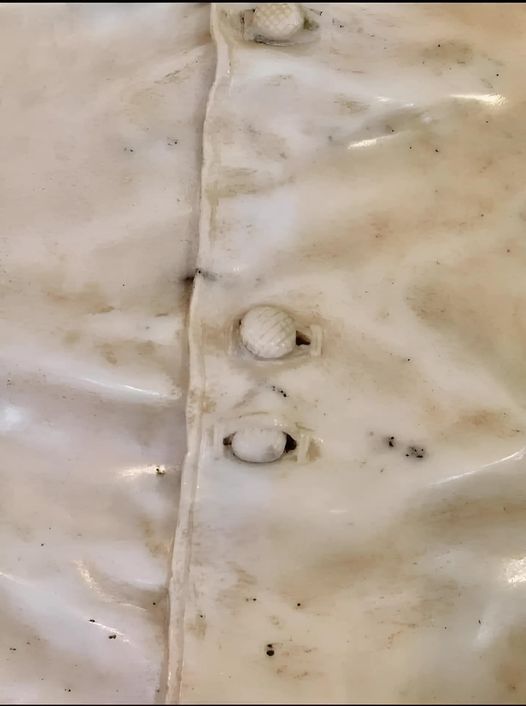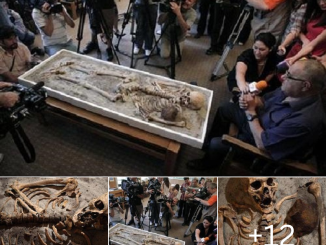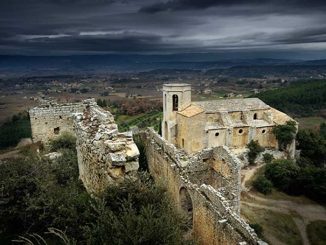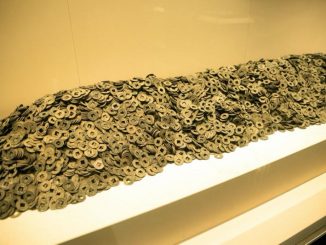Gian Lorenzo Bernini, a name synonymous with the Baroque period, is celebrated for his extraordinary ability to transform marble into lifelike forms with an unmatched virtuosity. Among his many masterpieces, the “Bust of Cardinal Scipione Borghese,” created in 1632, stands out not only for its intricate details but also for a specific feature that captures the essence of Bernini’s genius: a button out of the buttonhole. This seemingly minor detail demonstrates Bernini’s unparalleled skill in capturing the subtleties of human existence in stone. In this blog post, we will explore the significance of this small yet extraordinary element, delving into Bernini’s artistic prowess, the context of the sculpture, and the broader impact of his work on art history. We encourage readers to view images of this magnificent sculpture to fully appreciate its intricacies.

The Artistry of Gian Lorenzo Bernini
Gian Lorenzo Bernini was born in Naples in 1598 and rose to prominence as one of the leading figures of the Baroque era. His ability to breathe life into marble set him apart from his contemporaries. Bernini’s sculptures are renowned for their dynamic compositions, emotional intensity, and meticulous attention to detail. His works are not mere representations but rather vivid depictions of movement and emotion, encapsulating the essence of his subjects.
The “Bust of Cardinal Scipione Borghese” exemplifies Bernini’s mastery. Commissioned by Cardinal Borghese, an influential art patron and nephew of Pope Paul V, this bust showcases Bernini’s talent for capturing character and personality. The Cardinal’s face is rendered with remarkable realism, from the subtle wrinkles and expressive eyes to the soft texture of his skin. Bernini’s ability to depict different textures, such as flesh, hair, and fabric, in marble is a testament to his extraordinary skill.
The button out of the buttonhole in this bust is a particularly striking detail. This small yet significant element highlights Bernini’s keen observation of human behavior and his commitment to realism. It transforms the sculpture from a static representation into a moment captured in time, suggesting a sense of spontaneity and naturalism that was revolutionary in its day.
The Significance of the Button Out of the Buttonhole
The button out of the buttonhole in the “Bust of Cardinal Scipione Borghese” is more than a mere technical feat; it is a deliberate artistic choice that adds depth and narrative to the sculpture. This detail, seemingly trivial, draws the viewer’s attention and invites closer inspection, encouraging a deeper engagement with the artwork.
This unbuttoned detail suggests a moment of candidness, as if the Cardinal, in a moment of relaxation or absent-mindedness, left his button undone. It adds a layer of intimacy and humanity to the portrayal, breaking the formality typically associated with such commissions. The Cardinal is not just a distant figure of authority but a relatable human being with personal quirks and moments of inattention.
Bernini’s inclusion of this detail also speaks to his understanding of the viewer’s experience. By incorporating elements that evoke curiosity and surprise, he ensures that his sculptures are not merely admired from a distance but explored and appreciated up close. This approach enhances the emotional connection between the viewer and the sculpture, making the artwork more memorable and impactful.
The Context and Impact of Bernini’s Work
The “Bust of Cardinal Scipione Borghese” was created during a period when Bernini was at the height of his powers and influence. His relationship with the Cardinal was pivotal, providing him with numerous opportunities to showcase his talents and secure his reputation as a preeminent sculptor of his time. The Borghese family, with its wealth and connections, played a crucial role in Bernini’s career, commissioning several important works that remain celebrated today.
Bernini’s ability to infuse his sculptures with lifelike qualities revolutionized the art of sculpture. His works broke away from the static and idealized forms of the Renaissance, introducing a new level of realism and emotional depth. This shift had a profound impact on the trajectory of European art, influencing generations of artists who sought to emulate his techniques and approach.
The Galleria Borghese in Rome, where the “Bust of Cardinal Scipione Borghese” is housed, stands as a testament to Bernini’s enduring legacy. The gallery itself, a treasure trove of Baroque art, provides the perfect setting to appreciate the full scope of Bernini’s genius. Visitors to the gallery can witness firsthand the extraordinary skill and creativity that define his work, from grandiose statues to intimate portraits.
Ancient Discoveries and the Evolution of Art
As we marvel at Bernini’s achievements, it is worth considering the broader context of artistic discovery and innovation throughout history. Just as Bernini pushed the boundaries of what was possible in marble, ancient civilizations made significant contributions to the development of art and technology, laying the groundwork for future advancements.
One notable example is the Antikythera mechanism, an ancient Greek artifact discovered in a shipwreck off the coast of the island of Antikythera. Dating back to the first century BCE, this intricate device is often considered the world’s first analog computer, capable of predicting astronomical positions and eclipses with remarkable precision. The complexity and sophistication of the Antikythera mechanism challenge our assumptions about the technological capabilities of ancient civilizations, highlighting their ingenuity and understanding of the natural world.
Similarly, the discovery of the Chauvet Cave paintings in France, dating back approximately 30,000 years, revealed stunning examples of early human artistry. These prehistoric artworks, depicting animals and abstract patterns, demonstrate a sophisticated use of perspective, shading, and movement, suggesting that the drive for artistic expression is deeply rooted in human history.
Bernini’s work, like these ancient discoveries, underscores the continuity of human creativity and the relentless pursuit of excellence. Each era builds upon the achievements of the past, pushing the boundaries of what is possible and redefining our understanding of art and technology.
Conclusion
The “Bust of Cardinal Scipione Borghese” and the extraordinary detail of the button out of the buttonhole exemplify Gian Lorenzo Bernini’s unparalleled virtuosity. This seemingly minor element captures the essence of Bernini’s genius—his ability to infuse marble with lifelike qualities and his keen observation of human behavior. By focusing on such details, Bernini transcended the traditional boundaries of sculpture, creating works that are as emotionally engaging as they are technically impressive.
As we reflect on Bernini’s contributions to art history, it is essential to view the images of his work to fully appreciate the intricacies and nuances that define his sculptures. The Galleria Borghese offers a unique opportunity to explore these masterpieces up close, providing a deeper understanding of Bernini’s skill and vision.
In the broader context of historical discovery, Bernini’s work stands alongside other significant achievements that have shaped our understanding of human creativity and innovation. From ancient artifacts like the Antikythera mechanism to prehistoric cave paintings, these discoveries remind us of the continuous journey of artistic and technological advancement.
By studying and preserving these remarkable achievements, we honor the legacy of those who came before us and inspire future generations to continue exploring the boundaries of human potential. Gian Lorenzo Bernini’s sculptures, with their extraordinary virtuosity and attention to detail, remain a shining example of what can be achieved through dedication, skill, and a profound understanding of the human experience.
4o


